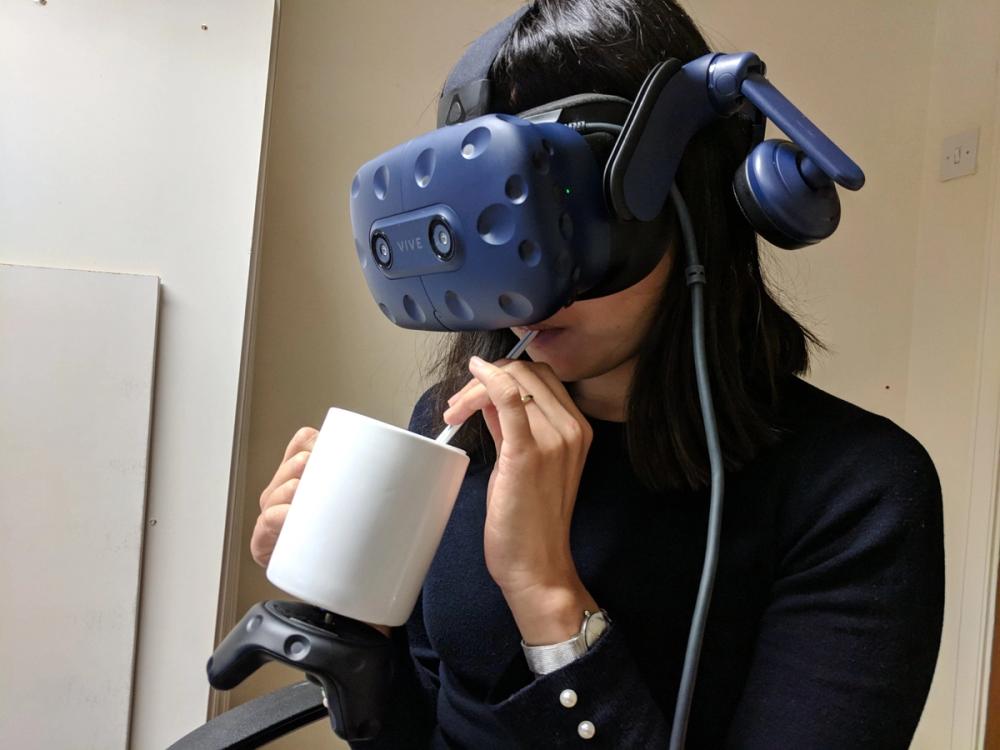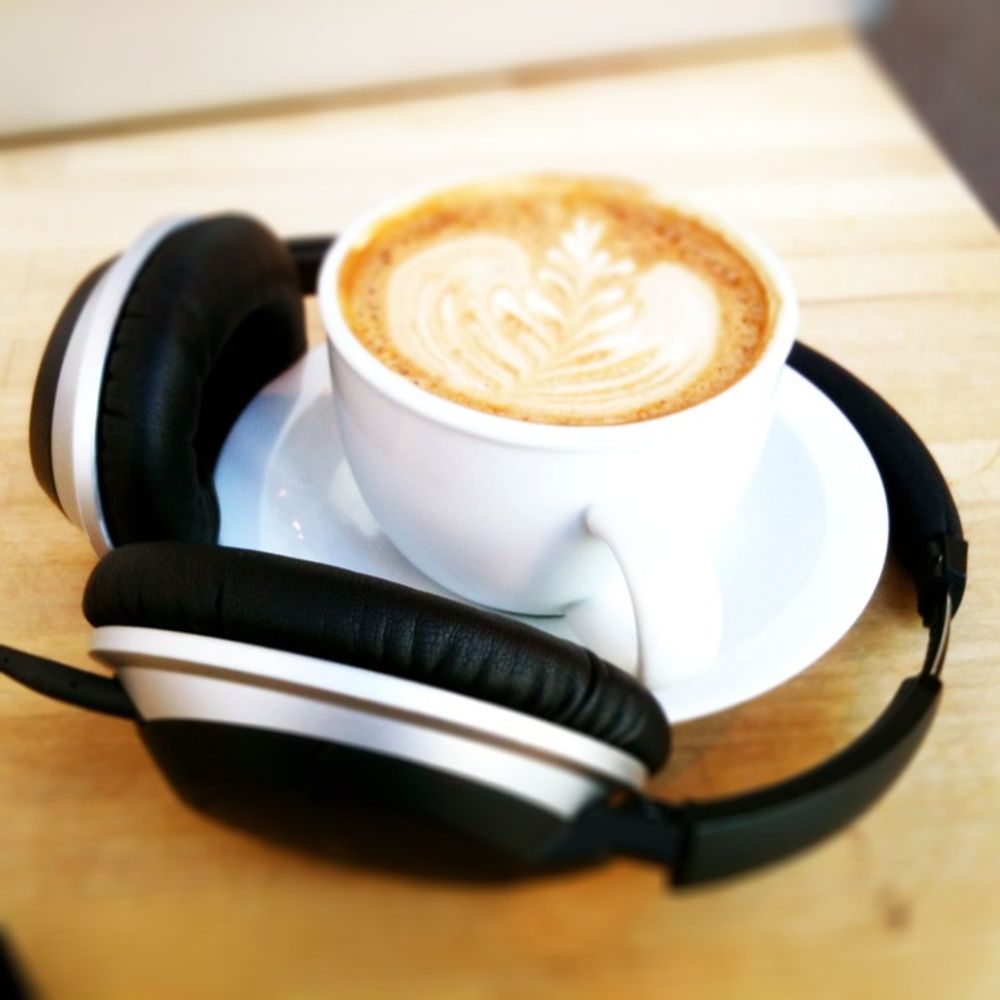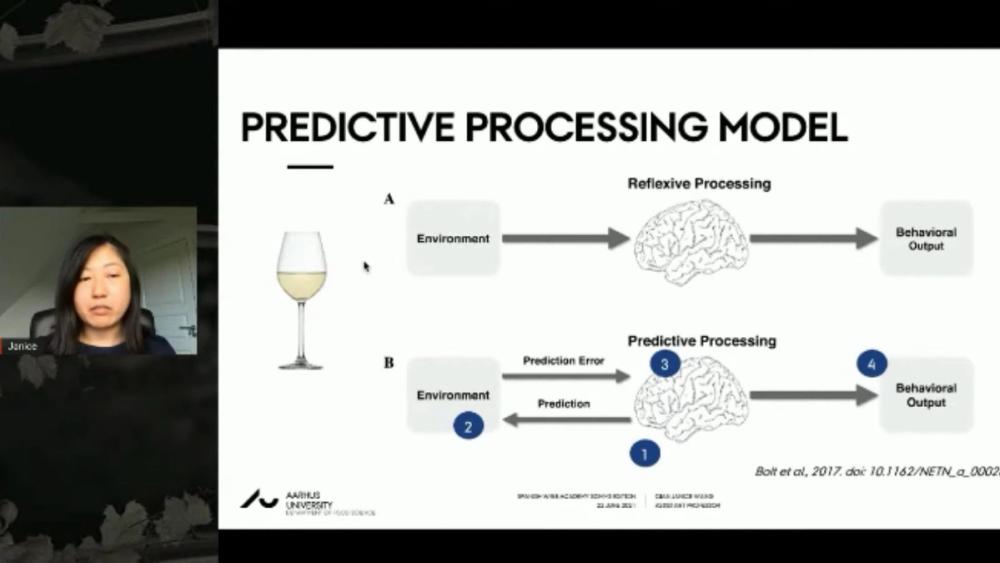“People found that string music matched with high end reds, and the flute music with white wines,” writes Turner about Dr Qian Janice Wang’s experiments with sound and wine pairing.
Of all the sessions at the Somms’ Edition of the Spanish Wine Academy from Ramon Bilbao this week, the one that really stood out was the second session introduced by Dr Janice Wang Qian, Professor at the Department of Food Science at the University of Aarhus. She is an expert in neuroscience, and someone who also happens to an international wine judge and a recent winner in the WSET & IWSC Future 50 Awards. This was going to be good!
Janice’s research focuses on the role of the brain’s sensory system and its connection with the perception of flavour and eating behaviour. It’s an area of research that she believes the wine trade needs to take much more interest in, in order to offer their clients exactly what they want. So, how do we use the way the brain works to build the wine list?

In one study Janice investigated whether making a coffee look milkier in a VR environment can alter its perceived flavour and liking.
Her studies focus on the way in which we react to the sensory experiences of food and wine tasting. Eating, she stated, involves all of the senses. Your brain is very active, predicting your experience even before the food or wine has hit your nose or your mouth. The brain, she continued, has already begun the prediction process when your eyes are looking at the bottle in front of you, or the wine in the glass. The brain has already started to think about what it’ll taste like.
A multisensory flavour perception, and how the brain decodes those messages and your response to it, is the reason we’re still here. Deciphering the look and smell and taste and feel used to be a matter of life and death. Should we be putting this in our mouth? It’s never just been about the smell and taste. So how can we in the hospitality trade manipulate those senses?
Sight matters
We’ve all done enough tastings before to know that colour can tell us quite a bit about the wine in the glass, including grape variety, age or, sometimes even, climate. But we can also be fooled by the colour of the wine. The Color of Odors was a famous study in 2001 at the University of Bordeaux in which they gave the participants a red and a white, then a few days later they gave them a red and a red-coloured-white. The descriptors were remarkably similar for the red and the red-coloured-white a few days later, leading to many celebratory headlines in the press stating that wine experts can’t tell between red and white wine. But is that fair? Does that mean we can’t tell the difference? Not in Janice’s view.
Janice ran a similar test with three rosé wines, but one was a fake rosé. Only people with prior wine tasting knowledge were tricked by the colour change. It shows that the brain is actively making predictions, and those that are using their experience. She pointed that The Fat Duck restaurant plays on the same theme. The dish of Beetroot and Orange Jelly messes with the predictive behaviour of the brain by using golden beetroot and blood orange. The colours are the other way around to what the customer is expecting.
Sound matters
Her PhD was based on how music can alter flavour perception. Sound level can determine what people eat, what they order, or what the food tastes like. Her research showed that when a bar was louder, people drank more and faster. The genre can also change purchasing behaviour. People will pay more when classical or jazz music is played compared with pop music. People are primed with the idea of luxury. It was hard at this point not to think of my business partner, Francois, and his insistence on playing Jazz Manouche at our French restaurant in Primrose Hill. It certainly sets the scene.
She’s convinced that music and wine pairing is a thing. Don’t wine writers often use music in tasting notes or as a descriptor?

Janice and her team ran an experiment with string music and woodwind music and asked her participants to tell them which they associated with white wine and which was red? People found that string music matched with high end reds, and the flute music with white wines. We have examples of this in hospitality already. Krug makes a big point of their wine and music matching, and the aforementioned The Fat Duck has their famous Sounds of the Sea dish in which customers listen to waves on the shore on iPods as they tuck in. So, do we need to think more creatively about how to incorporate music into a meal? A further experiment at Mugaritz restaurant used pressure pads in the specially designed dishes, so that the music started when the serving dishes were taken away. Janice holds that it’s not just adding to the theatre, the sensory elevation adds to the enjoyment of the meal.
Touch matters
During her PhD she conducted an experiment over two separate dinners in Oxford. Everything was kept identical, other than one set of customers ate with heavier cutlery, the other with lighter cutlery. Those using heavier cutlery were happy to pay more. Our friends at The Fat Duck have a dessert where the spoon is wrapped in soft fur to accentuate the soft, light, and fluffy textures of the dish. Are we now all starting to think more about what wine glasses we’ve got in the cupboards?
Sadly we only had Janice for a short allotted time, but this was a fascinating and thought-provoking session. The themes raised were something I’m keen – and I think any sommelier worth their salt should be keen – to learn more about.

The Somm’s Edition of the Spanish Wine Academy by Ramon Bilbao was streamed live on June 22nd2021. You can watch the entire discussion on the Spanish Wine Academy’s YouTube channel.
Anyone interested in learning more, check out Neuroenology by Gordon Shepherd, a popular book for sommeliers, by clicking here































